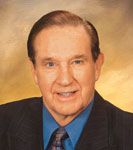Too much manpower?
The days of too many jobs chasing too few pharmacists are history. Today the situation is reversed. Is the situation grim for new pharmacists seeking to enter the market? Not necessarily, says one expert.

Key Points
The days of too many jobs chasing too few pharmacists are history. Today, the situation is reversed. In much of the country, too many pharmacists are chasing too few jobs. With an oversupply of pharmacists entering the market, new pharmacists seeking first opportunities may have to set their sights on underserved rural communities.

Recently in Southern California, pharmacists at Kaiser Permanente came within 48 hours of staging their first strike since the 1970s. The strike threat got bargaining restarted and resulted in an offer of a 6% annual raise, but benefits were slashed.
"We have gone from an undersupply of pharmacists to an oversupply in a very short time," Cameron said. "Pharmacists are scrambling for jobs and there is a shortage of internships. The pressure is going to be down for some time. In California alone we're looking at 5 new pharmacy schools. Pennsylvania is going from 3 schools to 7. We're seeing that picture across the country."
Cameron pointed out that pharmacy has long been a cyclical business.
He started his own pharmacist registry business in 1970.
"I did it because there was a shortage of pharmacists," he said. "There have always been ups and downs in demand, but the usual situation has been a slight to moderate shortage of pharmacists."
The latest developments
The past few years have seen more than a moderate shortage, according to Lucinda L. Maine, BS Pharm, PhD, president of the Pharmacy Manpower Project, who spoke at the recent American Pharmacists Association (APhA) annual meeting in Seattle, Wash. Her presentation was sponsored by Pharmacists Planning Services, Inc. Maine is also executive vice president and CEO of the American Academy of Colleges of Pharmacy.
Beginning around the turn of the century, aggregated pharmacist demand across the United States hovered between 4.0 and 4.5 on a 5-point scale, indicating high demand compared to supply. As of February 2011, demand was 3.4, down slightly from 3.48 in February 2010. There was moderate demand in 24 states and a balance between demand and supply in 27 states.
"The good news is that it's hard to get jobs right now," Maine said. "The major cities are saturated. We are seeing an acute burden in experiential education. We have to go to rural and underserved communities to get jobs. We have to restock the public health service with pharmacists. New graduates are assuming roles as MTM (medication therapy management) pharmacists because that's what they are trained for and that's where the jobs are."
Maine calls herself "an incurable optimist." Not every pharmacist shares her optimism. A profession that has become accustomed to ever-growing demand and ever-increasing salaries is not taking happily to the new competition. Several factors have contributed to what is widely seen as an oversupply of pharmacists, and the individuals involved are all coming under fire.
Newsletter
Pharmacy practice is always changing. Stay ahead of the curve with the Drug Topics newsletter and get the latest drug information, industry trends, and patient care tips.